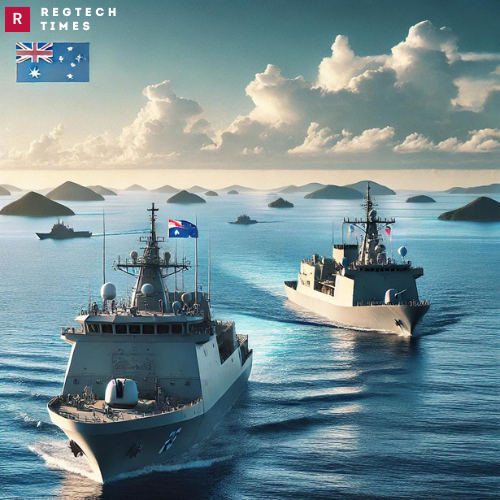Australia is intensifying its involvement in the South China Sea through joint maritime defense activities with the Philippines. This move, aimed at protecting vital trade routes and ensuring regional security, highlights Canberra’s growing interest in one of the world’s most contested waterways. However, this increased presence in the South China Sea, an area rife with overlapping territorial claims, could provoke economic consequences from China, Australia’s largest trading partner.
The South China Sea: A Critical International Waterway
The South China Sea holds immense strategic and economic importance, serving as a vital artery for global trade. Approximately one-third of the world’s maritime trade, valued at over USD 3 trillion annually, passes through these waters. However, the region is marked by territorial disputes, with China, the Philippines, Vietnam, Malaysia, and Brunei all staking claims. China’s vast claim, defined by its “nine-dash line,” covers nearly the entire sea, often clashing with other nations’ rights under international law.
In 2016, the Permanent Court of Arbitration in The Hague ruled in favor of the Philippines, declaring that China’s territorial claims in the South China Sea lacked a legal basis. Despite this ruling, Beijing continues to assert its dominance through naval patrols, artificial island-building, and military activities. These aggressive tactics, particularly against the Philippines, have drawn international concern and intervention.
Australia’s Maritime Involvement: Securing Trade and Stability
Australia’s increased participation in the South China Sea, especially through joint patrols with the Philippines, reflects a strategic move to safeguard both regional stability and its own economic interests. The Australian Ambassador to the Philippines, HK Yu, recently emphasized that these joint maritime defense activities represent a “collective commitment to strengthen regional and international cooperation in support of a free and open Indo-Pacific.”
Australia relies heavily on the freedom of navigation through Southeast Asian waters for the transportation of goods and energy supplies, with 99% of its trade passing through sea routes. Disruptions to this trade, particularly in the South China Sea, could have severe economic consequences for Australia. By participating in joint patrols, Australia aims to ensure that the waters remain open and free from coercion, while also supporting its regional allies like the Philippines.
Supporting the Philippines Against Growing Chinese Aggression
The decision to enhance joint maritime patrols with the Philippines sends a strong message of support to Manila, which has seen its sovereignty challenged by China in its exclusive economic zone (EEZ), known locally as the West Philippine Sea. By conducting regular patrols in these contested waters, Australia and the Philippines aim to normalize maritime activities, promoting adherence to international law while deterring further Chinese incursions.
Teresa Magbanua: The Philippines Faces Tough Reality in South China Sea Dispute
This move aligns with Australia’s broader defense strategy, which emphasizes strengthening partnerships with Southeast Asian nations and upholding the rules-based international order. Australia’s involvement in the South China Sea also aligns with the strategic interests of its allies, such as the United States and Japan, both of which have also increased their presence in the region as part of a collective effort to counter China’s assertiveness.
While Australia’s increasing presence in the South China Sea is a necessary strategic move, it comes with potential economic risks. China is Australia’s largest trading partner, and relations between the two nations have been strained since 2018, when Australia called for an independent investigation into the origins of COVID-19. This led to a series of trade restrictions by China, targeting Australian exports such as coal, wine, and barley.
Australia’s growing involvement in the South China Sea could further strain its economic ties with Beijing, although analysts suggest that China may be cautious about imposing new sanctions, given its own economic challenges. For now, Australia must carefully balance its strategic interests in the South China Sea with the need to avoid further damaging its trade relationship with China.
Broader Implications for Indo-Pacific Security
Australia’s actions in the South China Sea are part of a broader international strategy to maintain a free and open Indo-Pacific. At a recent Quad meeting in Tokyo, Australia, the United States, Japan, and India pledged to bolster maritime security in the region, with a particular focus on the South China Sea. This collective effort aims to uphold international law, prevent militarization, and deter the use of force as a tool for territorial expansion.
By supporting the Philippines and increasing its presence in the South China Sea, Australia reinforces its role as a key player in regional security. This move not only strengthens its partnerships with Southeast Asian nations but also contributes to the global effort to preserve peace and stability in one of the world’s most contested maritime regions.
Australia’s growing involvement in the South China Sea through joint patrols with the Philippines highlights its strategic interests in protecting international trade routes and upholding the rule of law. While this move may provoke tensions with China, it is a necessary step to ensure the stability of a critical global waterway and to support Australia’s allies in Southeast Asia.



